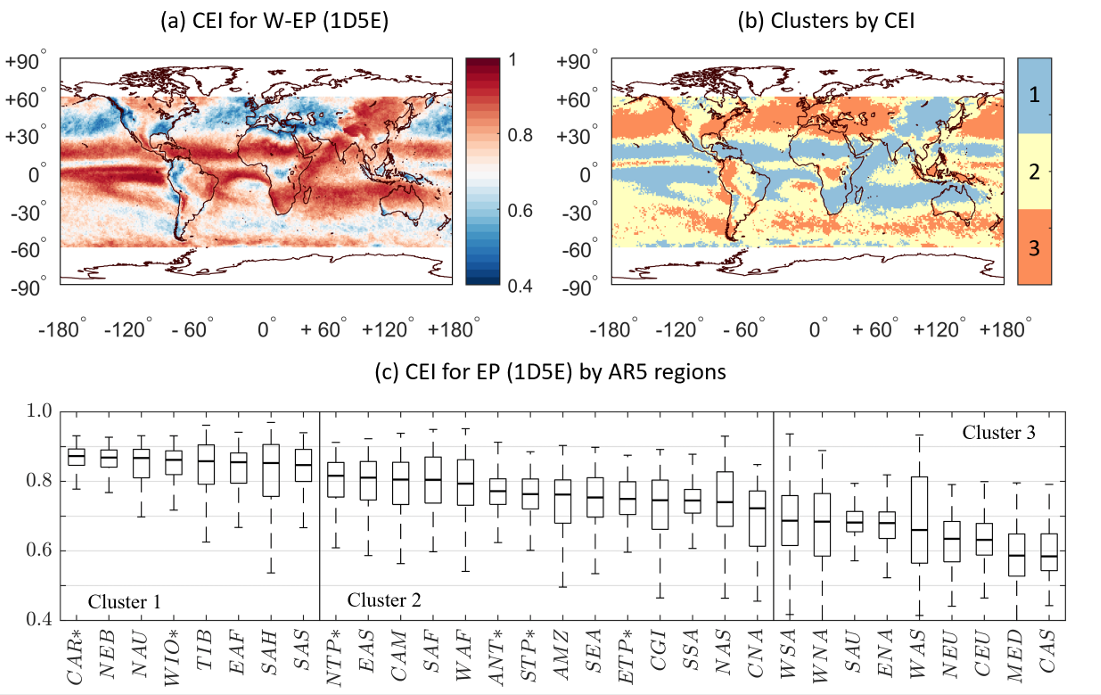Linking total precipitable water to precipitation extremes globally
Published in Earths Future, 2022
Recommended citation: Kim S., Sharma A., Wasko C., Nathan R. (2022). Linking total precipitable water to precipitation extremes globally, Earth’s Future, 10(2), e2021EF002473 https://agupubs.onlinelibrary.wiley.com/doi/abs/10.1029/2021EF002473
Abstract
The relationship between extreme precipitation (EP) and precipitable water (W) is useful to assess design extremes and speculate on their expected changes with rising global temperatures. This study investigates the relationship between daily and longer duration EP and corresponding W at a global scale by analysing remote-sensed and reanalysis datasets from 2003‒2019. An assessment of the consistency in the temporal trend across various W datasets reveals a consistent statistically significant upward trend during the period. This upward trend, while predominant worldwide, is especially significant over tropical land regions. W is found to generally be positively correlated with surface (dew point) temperature, suggesting a rise in temperature will cause a greater W over time. To assess whether EPs occur coincident with extreme W, the Concurrent Extremes Index (CEI) is proposed, which compares the cumulative distribution functions between the two variables and assumes a value of unity if ranks of the EP series are identical to that of the coincident W series, and zero with no correspondence. For EP (defined as the five largest 1-day events per year on average), a high CEI is pronounced across the tropics, except for rainforests. The W-EP relationship is noticeably weakened in non-tropics, except the inland regions of North America and East Asia. An assessment indicates that as the duration of the EP becomes longer, the influence of W on EP decreases. However, the contrast in the W-EP relationship between the tropics and non-tropics is found to become more pronounced as longer-duration EPs are considered. 
